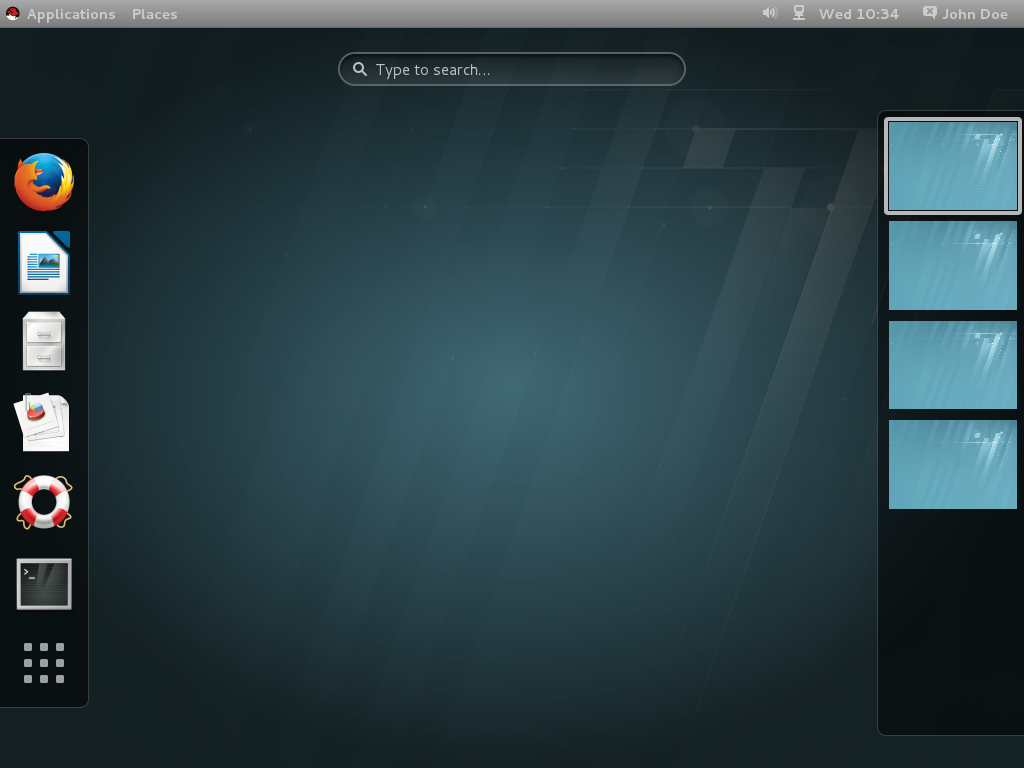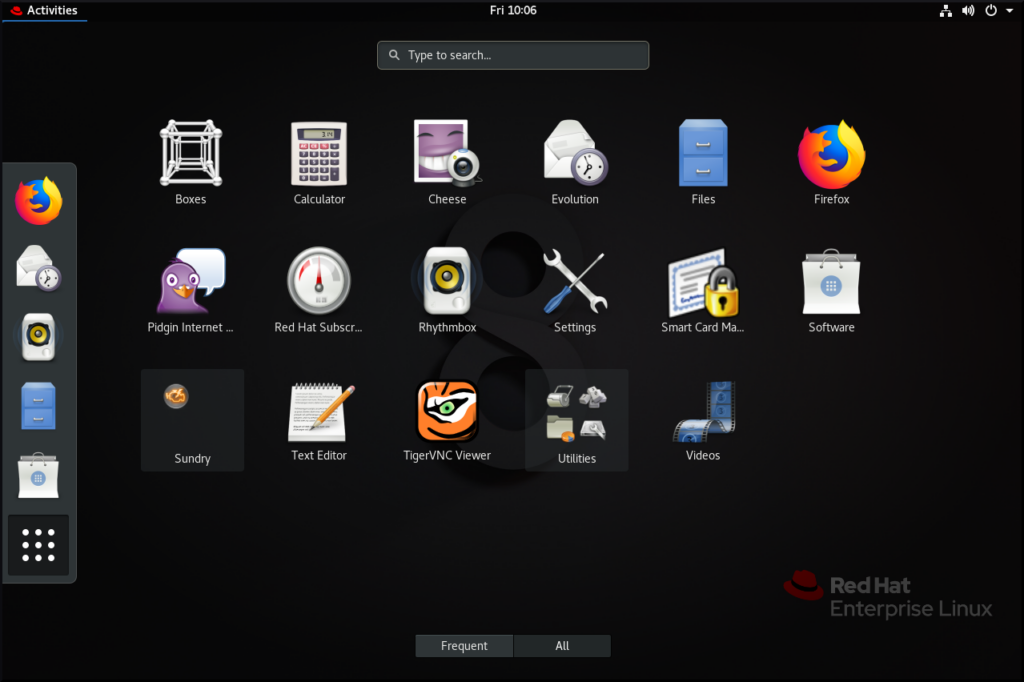I've spent decades in the trenches of operating system tech. Today, I bring you Red Hat Enterprise Linux review, dissecting its every feature, advantage, and shortfall. You'll find all the details you need to decide if it's the right software for your enterprise needs.

Red Hat Enterprise Linux Product Overview
Red Hat Enterprise Linux (RHEL) serves as a stable, secure, and scalable open-source operating system for enterprise computing. Target users include corporations, government agencies, and academic institutions.
The platform offers robust security features, and it specifically solves the pain points of system uptime, manageability, and compliance. Its best features include high customization, strong security protocols, and extensive support for various hardware configurations.
Pros
- Customization: The system allows deep-level adjustments to meet specific enterprise needs.
- Security: Incorporates mandatory access controls and other high-grade security measures to protect data and infrastructure.
- Hardware Support: Comes with extensive hardware compatibility, meaning fewer headaches during deployment.
Cons
- Complexity: The highly customizable nature can lead to a complex setup process.
- Resource Intensive: Requires a substantial amount of system resources for optimal performance.
- Cost: The support subscriptions can be a financial burden for smaller organizations.
Expert Opinion
When it comes to assessing Red Hat Enterprise Linux, I have to say, its feature set is both its strongest asset and its Achilles heel. Comparing it to other enterprise-grade OS options, it excels in security protocols and hardware compatibility. It gives you all the tools you'd need to construct a highly secure, tailored environment.
However, its resource intensity and complexity are not for the faint of heart. It outperforms in scalability and security but underperforms in ease of use and budget-friendliness. In my judgment, Red Hat Enterprise Linux best suits larger enterprises and governmental agencies that require high levels of security and have the resources for implementation.
Additionally, you should explore life cycles as, for example, Red Hat Enterprise Linux version 7 (RHEL 7) offers a decade of support, broken down into Full Support, Maintenance Support 1, and Maintenance Support 2 phases, which is then succeeded by an Extended Life Phase.
On the other hand, other variants, such as Red Hat Enterprise Linux 8 (RHEL 8) and 9 provide a ten-year life cycle, consisting of Full Support and Maintenance Support phases, which are then followed by an Extended Life Phase. In addition to that, RHEL 9 enables you to run PHP.
Red Hat Enterprise Linux: The Bottom Line
Red Hat Enterprise Linux sets itself apart through its focus on high customization and security protocols, areas where many enterprise-level competitors lag.
These features make it ideal for organizations that need a robust, tailored computing environment. You'll find its hardware support noteworthy, alleviating much of the pain often associated with deploying an enterprise-level OS.
Additionally, Red Hat Enterprise Linux manages workloads with enduring stability, robust support, and heightened security, optimizing the hardware ecosystem for quicker, more reliable service distribution from data centers to edge locations.
Moreover, we should also mention Fedora when talking about Linux and Linux distributions. Fedora serves as a no-cost distribution and community initiative, acting as the precursor for Red Hat Enterprise Linux. As a general-purpose platform, it allows Red Hat and its contributing community to quickly experiment with emerging technologies.
Red Hat Enterprise Linux Deep Dive
Product Specifications
- User Interface - Yes
- Multi-User Support - Yes
- File Management - Yes
- Process Management - Yes
- Task Scheduler - Yes
- Virtual Memory - Yes
- Device Drivers - Yes
- Networking Features - Yes
- Security Protocols - Yes
- Software Package Management - Yes
- Customizability - Yes
- Hardware Compatibility - Yes
- Logging and Monitoring - Yes
- Scripting Capabilities - Yes
- High Availability - Yes
- Software Repository - Yes
- Built-in Firewall - Yes
- Data Encryption - Yes
- API Support - Yes
- Energy Efficiency Features - No
- Disk Quotas - Yes
- Remote Access - Yes
- System Backup - Yes
- Auto-Updates - Yes
- Multi-Platform Support - Yes
- Authentication Configuration Tool - Yes
- Red Hat Virtualization Tool as Virtual Machine - Yes
Red Hat Enterprise Linux Feature Overview
- User Interface: Red Hat offers a polished GUI, along with a robust command line interface, which suits users of different skill levels.
- Security Protocols: Mandatory Access Controls and SELinux provide layers of security, making it an ideal choice for sensitive environments.
- Software Package Management: The YUM tool allows for simple installation and management of software packages, distinguishing it from other OS software.
- Customizability: Red Hat allows you to adjust system configurations deeply, meeting very specific enterprise needs.
- Multi-User Support: Designed with enterprise in mind, Red Hat excels at supporting multiple users with various permission levels.
- Task Scheduler: The Cron job scheduler allows for intricate task management, including conditional triggers.
- High Availability: It offers several clustering options, setting it apart from competitors who struggle with uptime.
- Hardware Compatibility: Red Hat stands out for its extensive compatibility list, making it versatile in a variety of hardware setups.
- Logging and Monitoring: Comprehensive logging means fewer blind spots in event tracking and system auditing.
- API Support: It offers robust API support, allowing integration into various enterprise systems and tools.
Standout Functionality
- Security Protocols: Red Hat's focus on top-notch security features like SELinux is unrivaled in the market.
- High Availability: Clustering options, offering failover and data recovery, make it stand apart.
- Customizability: The deep level of customization available gives an edge over other OS platforms which often limit flexibility.
Integrations
Red Hat provides out-of-the-box integration with LDAP, OpenSCAP, and Kubernetes. The platform also offers a robust API for custom integrations, and various add-ons like Red Hat Insights can extend its capabilities further.
Red Hat Enterprise Linux Pricing
Pricing varies significantly based on the type of support and the number of sockets or nodes. It generally costs around $349/socket/month (min 5 seats, billed annually) for the standard tier, which includes 24x7 support and unlimited guests. There's no free tier, but do expect additional costs for extra support or features.
Ease of Use
Red Hat's robust features make it a powerful tool but also introduce a level of complexity that can be challenging for beginners. Navigating the extensive list of customization options requires some time and expertise.
A primary hurdle for IT teams is managing and diminishing the need for manual activities and operations. While task-specific automation offers some relief, the resulting multitude of automated processes can add complexity as the IT landscape expands.
Red Hat enables the consolidation of these processes into a unified automation platform. This platform streamlines all IT operations consistently across the full scope of your infrastructure, encompassing areas such as networking, storage, and security.
Furthermore, Red Hat Enterprise Linux adheres to the Filesystem Hierarchy Standard (FHS), a framework that outlines the naming, placement, and permissions for various file types and directories.

Customer Support
Red Hat support offers a variety of support channels, including live chat, documentation, and webinars. However, some users might find the response time during non-critical issues a bit slow, which can be frustrating when immediate assistance is needed.
Red Hat Enterprise Linux Use Case
Who would be a good fit for Red Hat Enterprise Linux?
The ideal users of Red Hat Enterprise Linux often reside in larger corporations, government agencies, or academic institutions. Why? Because these are environments where the high level of security, customization, and multi-user support truly shine. Industries that handle sensitive data, such as healthcare and finance, find robust security protocols particularly beneficial.
Teams that are well-versed in Linux environments also often become loyal users, appreciating the deep level of control they get. Companies with substantial IT resources can leverage the system's features for highly specific, often complex, operational requirements.
Also, Red Hat advocates for an open hybrid cloud as the preferred approach to construct, develop, and manage a mixed environment of applications, infrastructure, and workflows.
One more thing worth mentioning is that you do not have to have a Linux system or mac OS to run Red Hat Enterprise Linux, you can also run it on Microsoft’s Windows which is an excellent option.
Who would be a bad fit for Red Hat Enterprise Linux?
Smaller businesses or startups often find themselves at odds with the robust, but complex, nature of Red Hat Enterprise Linux. If your team lacks Linux expertise, the steep learning curve and initial complexity can become a hurdle rather than an advantage. Industries where rapid deployment and simple setups are crucial might find Red Hat cumbersome.
Those on a tight budget may also not appreciate the financial commitment required for both licensing and possible additional support costs.
Red Hat Enterprise Linux FAQs
What is Red Hat Enterprise Linux mainly used for?
It serves as a stable, secure, and scalable operating system for enterprise-level computing needs.
Is Red Hat Enterprise Linux suitable for small businesses?
Generally, it's more tailored for larger corporations or institutions that require high-level security and customization.
Does Red Hat Enterprise Linux offer good security features?
Yes, it offers robust security protocols including Mandatory Access Controls and SELinux.
Is it customizable?
Yes, Red Hat Enterprise Linux allows for deep-level customization to meet specific enterprise needs.
Can Red Hat Enterprise Linux integrate with other software?
Yes, it has native integrations like LDAP and OpenSCAP, and also offers a robust API for custom integrations.
What kind of customer support does Red Hat Enterprise Linux offer?
It offers various channels for support, including 24/7 live chat, documentation, and webinars.
Is Red Hat Enterprise Linux resource-intensive?
Yes, it requires a significant amount of system resources for optimal performance, which might be a concern for smaller setups.
Are there any hidden costs apart from the subscription fee?
Additional costs may arise for extra support or features, depending on your specific requirements.
Alternatives to Red Hat Enterprise Linux Review
- Ubuntu Server: Ubuntu Server tends to be more user-friendly and therefore a better option for those new to Linux environments.
- SUSE Linux Enterprise Server: This platform excels in SAP environments and is a go-to option for companies that rely heavily on SAP solutions.
- Oracle Linux: Oracle Linux offers optimized performance for Oracle databases, making it a prime choice for enterprises deeply invested in Oracle products.
Red Hat Enterprise Linux Company Overview & History
Red Hat, a software company specializing in open-source enterprise solutions, is renowned for its flagship product, Red Hat Enterprise Linux. As a subsidiary of IBM, the company serves a wide array of clients, from large corporations and government agencies to academic institutions. Headquartered in Raleigh, North Carolina, Red Hat has been a pivotal player in open-source community contributions.
Notable figures associated with the company include Jim Whitehurst, its former CEO, who played a key role in steering the company toward enterprise solutions.
The mission of Red Hat is to act as a catalyst in communities of customers, contributors, and partners to create better technology in an open-source way. Founded in 1993, the company shifted its focus to enterprise computing around 2000 and marked a significant milestone in its history when it was acquired by IBM for $34 billion in 2018.
Summary
I've walked you through the ins and outs of Red Hat Enterprise Linux, highlighting its capabilities, potential drawbacks, ideal user scenarios, and even alternatives. If you're a larger organization with complex, customizable needs and an emphasis on security, Red Hat is worth serious consideration.
However, smaller teams or those new to Linux may find other options like Ubuntu Server more fitting. Feel free to comment and share your experiences below; your insights could be invaluable to others making their decision.
